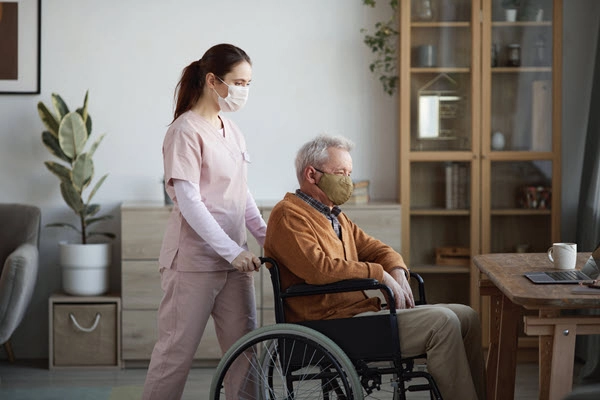The agency aims to understand how to avoid such crises in the future.
The Office of the Inspector General released a report examining data submitted by U.S. nursing facilities—and the analysis drew a grim picture of how Medicare beneficiaries fared against the SARS-CoV-2 virus, which causes the COVID-19 infection.
“It on nursing home residents is necessary if tragedies like this are to be averted. is important that we understand the extent of the outbreaks in nursing homes, including increases in deaths, to not only acknowledge the pandemic’s toll, but to improve efforts to mitigate the damage of the continuing pandemic, and better prepare for future public health emergencies,” the report says, led by study team leader Jenell Clarke-Whyte, who works in the New York regional Office of Evaluations and Inspections. Other study authors include Rachel Bryan, Sarah Guyer, Heather Koenig, and Melanie Tsang.
Grapple With the Numbers
The numbers are stark, and the data may not fully represent the reality of how hard nursing facilities were hit.
Two in 5 beneficiaries were diagnosed with COVID-19 or likely had COVID-19 since May 8, 2020; approximately half of Black, Hispanic, and Asian beneficiaries had or likely had COVID-19 (versus 41 percent of white beneficiaries); and the mortality rate of every age group increased in 2020 compared to 2019.

But does that tell the whole story? COVID-19 tests were hard to come by for much of 2020, and nursing homes weren’t required to submit data before May 8, 2020. Although the study focuses mostly on Medicare beneficiaries, it notes that dually eligible beneficiaries were more likely to contract COVID-19 than Medicare-only beneficiaries: 56 percent versus 29 percent, respectively.
“Previous research has shown that dually eligible beneficiaries are generally poorer and sicker — having low-incomes and multiple chronic conditions to manage — compared to other Medicare beneficiaries,” the study authors say.
Although nursing homes were hit hard in the beginning of the pandemic, the positive infections skyrocketed by December, topping 6,600 confirmed infections per day. Some states were hit harder than others, but the nursing home infections largely correlated with the respective states’ general infection rate.
All told, 22.5 percent of Medicare beneficiaries in nursing homes died in 2020, compared to 17 percent in 2019. In December 2020, 6.2 percent of Medicare beneficiaries in nursing homes died, compared to 3.8 percent in December 2019.

Understand That Beneficiary Race Matters
The OIG doesn’t delve into why the mortality rates of beneficiaries of different races varied, but the data their report presents shows that 27 percent of Asian beneficiaries in nursing homes died in 2020, compared to 17 percent in 2019. Twenty-three percent of Hispanic and Black beneficiaries in nursing homes died in 2020, compared to 15 percent in 2019. White beneficiaries in nursing homes: 24 percent in 2020 versus 18 percent in 2019.
Age, however, didn’t seem to boost or diminish an infected beneficiary’s chances of beating COVID-19: Mortality rate increased for all age groups (under 65, 65-74, 75-84, 85 and older) in 2020 compared to 2019.
Residents’ biological sex also seemed to not factor in their getting infected. Mortality rates also rose for both males and females.
Note Study Caveats
The OIG study relied on data that nursing homes reported and the authors say that incorporating numbers from Medicare claims data, such as information from the MDS, could provide a lot more information, especially because claims data covers the entire year and includes demographic information, as well as information pertaining to individual residents’ conditions. More complete information could help highlight disparities in nursing home populations, as well as help to prevent further tragedy, the study authors say.
